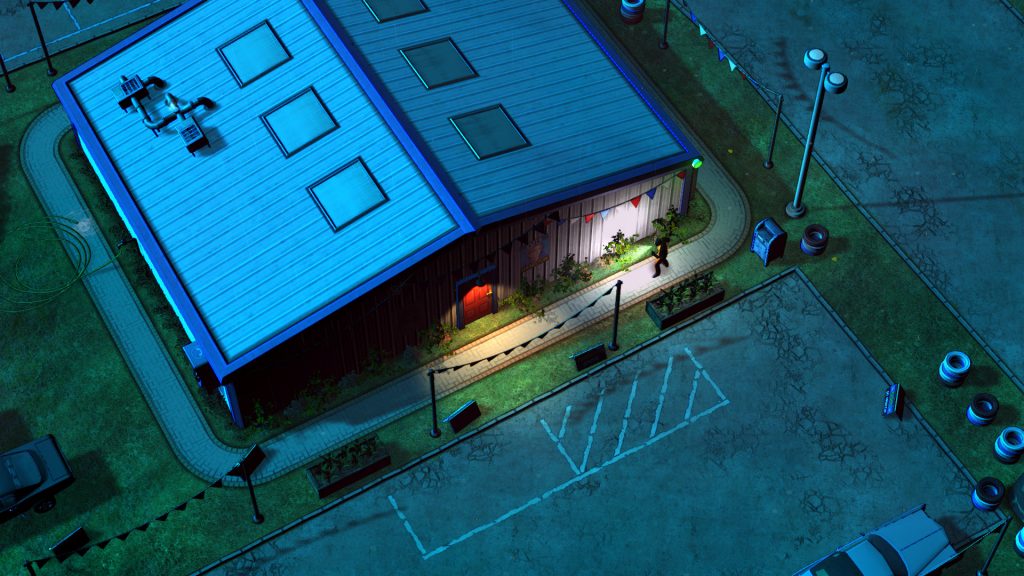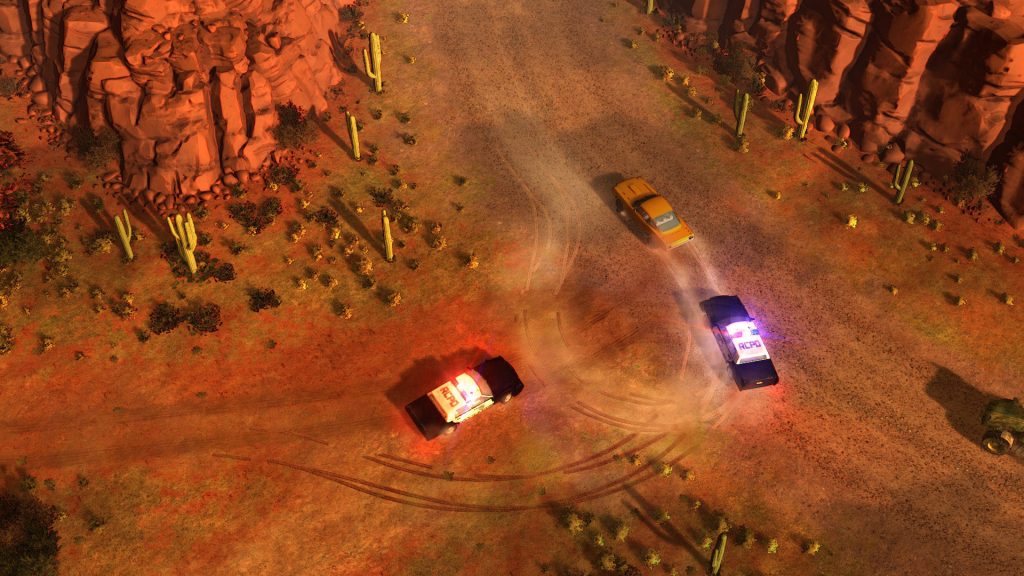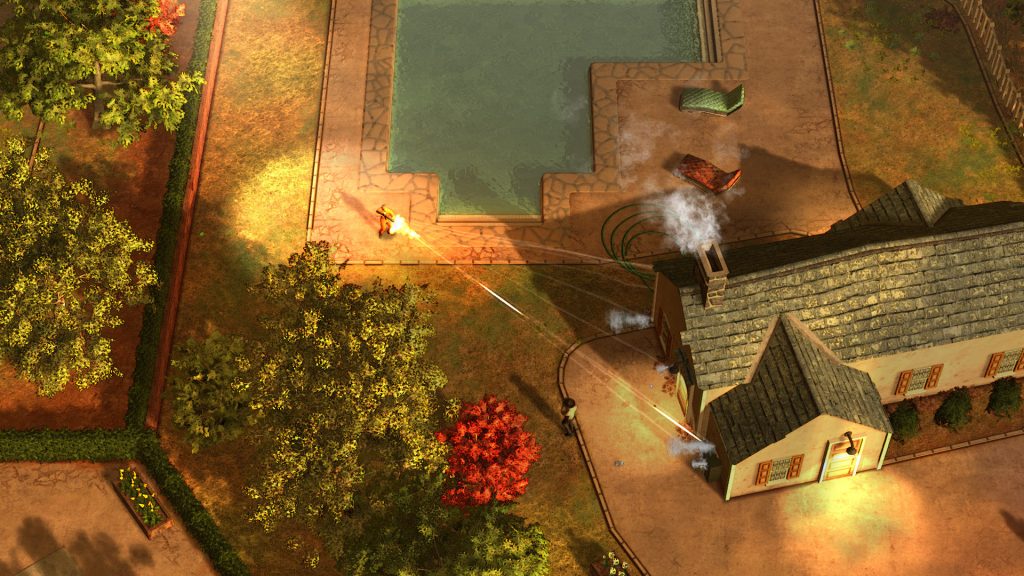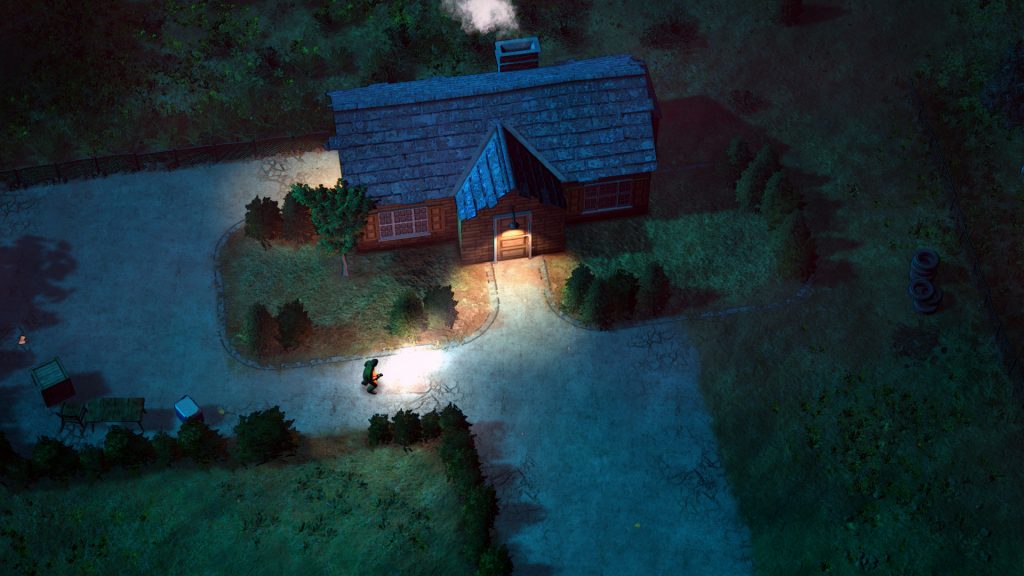Grand Theft Auto has quite a lot to answer for. There’s only so many times a series can influence an entire sub-genre, but Grand Theft Auto has managed to do it twice. The first slew of GTA games were top-down crime sandboxes that haven’t aged well, but managed to inspire games like Retro City Rampage. The far more well-known and well-regarded aspect of Grand Theft Auto is the series’ set of 3D outings. From GTA III through to GTA V (there have been quite a few more games than just GTA IV between them), Grand Theft Auto arguably birthed the open-world sandbox genre we know and love today.
There aren’t quite as many games that take inspiration from the top-down GTA games, but there are a few. Grand Theft Auto itself has dabbled in its top-down past; 2009’s Chinatown Wars returned to a style inspired by the original PlayStation games, and it was fairly well-regarded. American Fugitive is a game strongly inspired by this era of everyone’s favourite madcap crime caper simulator. The game puts players in the shoes of framed non-murderer William Riley as he seeks vengeance for his father’s murder after being framed for said murder. Riley breaks himself out of jail at the outset of American Fugitive, and thus begins an adventure heavily inspired by old-school GTA.

It must be said that developer Fallen Tree Games (based in Britain, just like Rockstar) has done a pretty excellent job of mimicking the original Grand Theft Auto games. The general aesthetic and feel of American Fugitive is strongly reminiscent of Rockstar’s – or perhaps we should say DMA Design’s – chosen perspective and aesthetic. Playing American Fugitive just feels like playing a GTA game, right down to the mission structure and minigames. That said, it’s not a perfect conversion. The faux-isometric perspective doesn’t do the game any favours. It doesn’t feel as straightforward as Chinatown Wars, but it doesn’t feel as immersive as GTA V.
That said, the presentation here is excellent. American Fugitive is set in the 1980s, and it’s a game that presents its sun-dappled autumnal ‘80s town with perfect verisimilitude. Everything here feels exactly like a small town in America should. The visuals pop and shimmer with life and colour, textures look gorgeous and trees cast long, beautiful shadows. Redrock County really does feel like a place you’d want to get lost in, a place you’d want to create new memories and settle down. Of course, we’re not here to do that; we’re here to get our murder on, and unfortunately this is where American Fugitive starts to fall apart somewhat.

For a crime sandbox like this one to work – even one that’s not trying to ape the ambitious 3D style of latter-day GTA games – it’s got to have a varied mission structure. This is something that Retro City Rampage understood. For all its corny not-quite-parodies and less-than-stellar writing, Retro City Rampage switched up its gameplay style regularly to create something that went above and beyond the standard Grand Theft Auto formula. American Fugitive fails to reach those heights. Its mission design is dull and repetitive, and over the course of a 10-hour campaign you’re never asked to deviate from the standard get-thing-for-person-in-return-for-kudos formula.
That’s not to say that the journey can’t be fun. Police chases and shootouts are thrilling, and just like in GTA the game becomes more tense and exciting as your wanted level shoots up. Missions will often call in the police even when it doesn’t make sense in narrative terms. Although this initially might seem frustrating, you’ll eventually realise it’s in place to make encounters varied and exciting. When the fundamental core gameplay loop of a police chase is this involving, you’ll be looking for reasons to engage in one, and the story campaign delivers on this front in spades. The game’s tight, responsive driving mechanics enhance the sense of fugitive joy that American Fugitive instils.

There are also plenty of little touches that keep things interesting. Breaking and entering is fun (bet you never thought you’d read that sentence), with a top-down mini-game that’s reminiscent of Sega Mega Drive classic Bonanza Bros. Combat is enjoyable and utilises a similar control scheme to many twin-stick shooters, and while it might lack the finesse and nuance of that genre’s finest examples, it serves its purpose just fine. Vehicles feel nice and varied, so the game tasking you to drive as many different types as possible over its story campaign is natural. Just exploring Redrock County is fun, too; the contradiction in Grand Theft Auto was always that it was as relaxing as it was adrenaline-inducing, and that’s true of American Fugitive, too.
All in all, American Fugitive is a perfectly acceptable top-down GTA clone. It’s only ever going to be mentioned in the same breath as its big brother, which is kind of deserved. The game doesn’t really do much to differentiate itself from Chinatown Wars or to distance itself from its obvious PS1-era template. That said, it’s a perfectly acceptable way to spend 10 hours or so, and we can think of plenty of worse games that have been released in recent months. Tight combat, great driving controls and an emphasis on period setting all do their best to divert players’ attention from a weak overarching story and an encroaching sense of repetition. Good, but not great.
This post didnt have a specific author and was published by PS4 Home.

